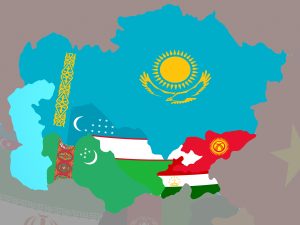The first-ever EU-Central Asia leaders’ summit is back on the schedule.
According to media reports, the EU-Central Asia leaders’ summit was originally planned for 2024. An April 2024 briefing by the European Parliamentary Research Service stated that “formalizing the C5 + EU cooperation at the highest political level… will be an opportunity to match the EU’s political relevance in the region with its status of major donor and investor.”
European politics, namely the June 2024 European Parliament election and its aftermath, apparently derailed the 2024 plan for a big summit, but in November 2024 European leaders expressed hopes to organize the summit in the first half of 2025.
In a January 21 Telegram post, Saida Mirziyoyeva, assistant to the president of Uzbekistan (her father, Shavkat Mirziyoyev), recounted a meeting with Ambassador of the European Union to Uzbekistan Toivo Klaar. In their meeting, Mirziyoyeva said that preparations for a summit in Samarkand, to be held in April 2025, were discussed.
The EU mission confirmed the plans to Gazeta.uz, with Klaar stating: “We believe that the upcoming EU-Central Asia summit will significantly strengthen our ties. The new EU leadership is truly committed to expanding relations with Uzbekistan and Central Asia. We are grateful to President Mirziyoyev for proposing Samarkand as the venue for this first-ever EU-Central Asia summit.”
Europe may seem late to the leaders’ summit party, but it is also coming to Central Asia, arguably a demonstration of respect for the region’s centrality in its own affairs that contrasts with China and the United States. The May 2023 and September 2023 China- and U.S.-Central Asia leaders summits took place in Xi’an, China and New York City, the United States, respectively. The U.S.-Central Asia Leaders Summit was a sideline event during the United Nations General Assembly that year. That the European leadership is traveling to Samarkand for the summit is an important detail.
Systemic differences mean that assorted top EU leaders have already met, several times, with the Central Asian presidents. For instance, in October 2022 then-European Council President Charles Michel met with the Central Asian presidents in Astana, Kazakhstan. At the time, he congratulated Kazakh President Kassym-Jomart Tokayev “on hosting the first EU-Central Asian leaders’ meeting.” Michel met again with the Central Asian presidents in Cholpon-Ata, Kyrgyzstan in 2023.
The upcoming meeting has been referred to in Uzbek media as the “first full-scale EU-Central Asia summit.” Specific attendees have not been reported, but Ursula von der Leyen secured another five year term as president of the European Commission following the June 2024 elections.
European interest in Central Asia has intensified since the 2022 full-scale Russian invasion of Ukraine, but it certainly did not begin there. In 2019, the EU released an updated strategy for Central Asia. It did not offer many new positions writ large – as I wrote in 2019: “Ultimately, the new EU Central Asia strategy is the old EU Central Asia strategy in a fresh PDF” – but it did offer a sustained vision for relations.
Over the last several years, various European leaders have traveled to the region and a number of projects and programs were eventually floated that filled in some of the blank spaces when it came to how Europe would engage with Central Asia. For example, the Global Gateway (GG) – the EU’s response to China’s Belt and Road Initiative (BRI) – was launched in 2021. At its inception, the GG aimed to put 300 billion euros toward investments in digital and transport infrastructure, energy generation and transmission, and health projects by 2027. Although the program is bigger than Central Asia, the region is a core focus, with particular interest in developing the Trans-Caspian Transport Corridor. The Russian war in Ukraine, and the Eurasian fallout, further intensified interest in this area.
In January 2024, European Commission Executive Vice President Valdis Dombrovskis announced an overall commitment to invest 10 billion euros in sustainable transport connectivity in Central Asia following an investor forum.
The upcoming leaders summit will serve to solidify these plans amid a rapidly changing geopolitical landscape. The veritable implosion of U.S. foreign assistance, and its utterly unclear future under the second Trump administration, serves to further heighten Europe’s importance as a partner in Central Asia.
Finally, the EU’s plans in Central Asia remain naturally tethered to Uzbekistan. The country is literally central in Central Asia and boasts the region’s largest population and its second-largest economy. For all the complexities and hypocrisies of Mirziyoyev’s “New Uzbekistan,” Tashkent’s commitment to regional cooperation and connectivity has been unwavering.
Following the planned April 2024 leaders summit, Uzbek President Mirziyoyev is expected to make a visit to Brussels in return. Kun.uz reported in early February that the Uzbek president discussed the summit preparations in a recent phone call with current European Council President António Costa.
Costa, the report stated, expressed expectations that Mirziyoyev would visit Brussels later in 2025 to sign an Enhanced Partnership and Cooperation Agreement (EPCA) with the EU, an upgrade to the current Partnership and Cooperation Agreement (PCA), which has been in place since 1999.

































